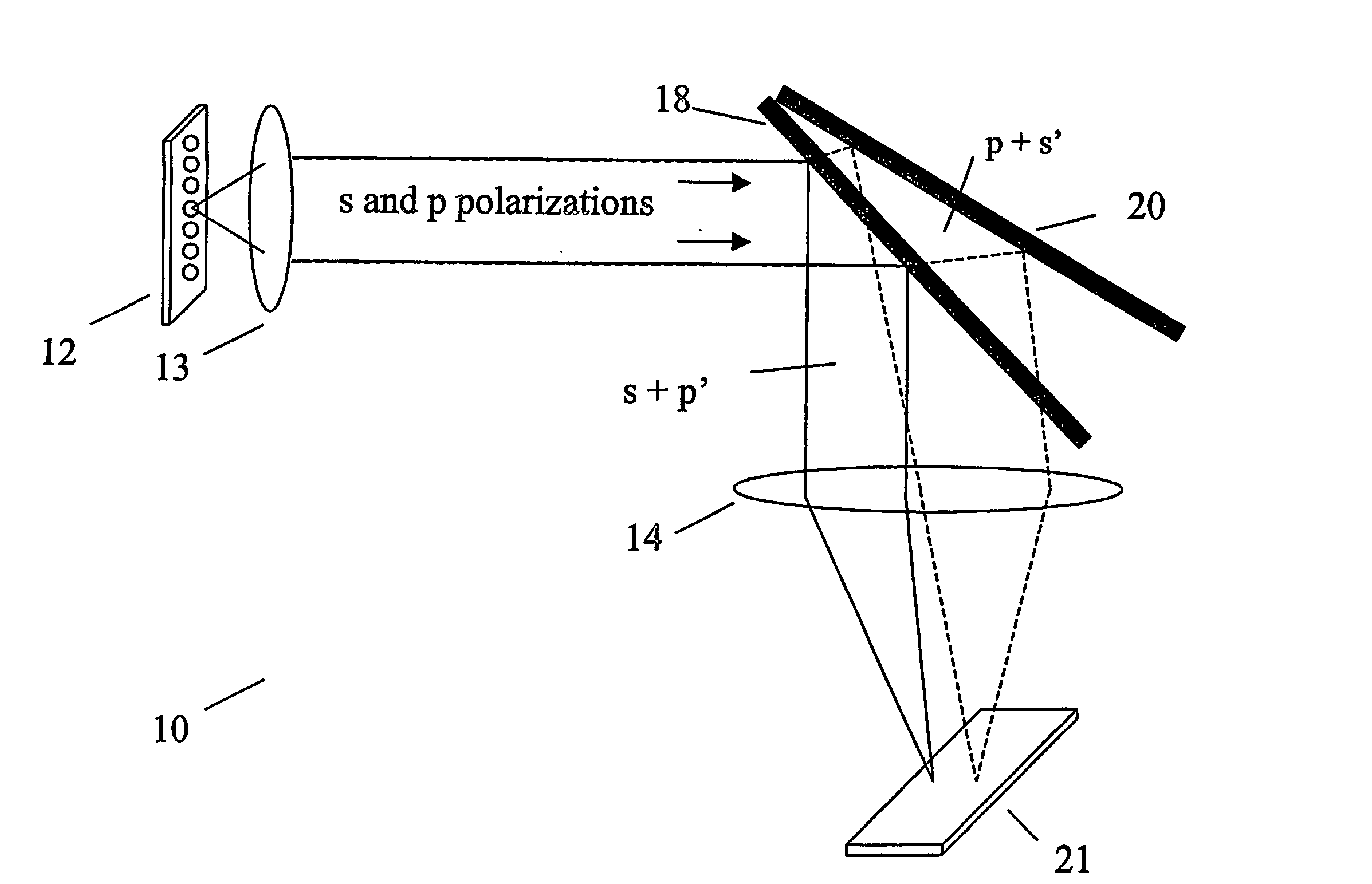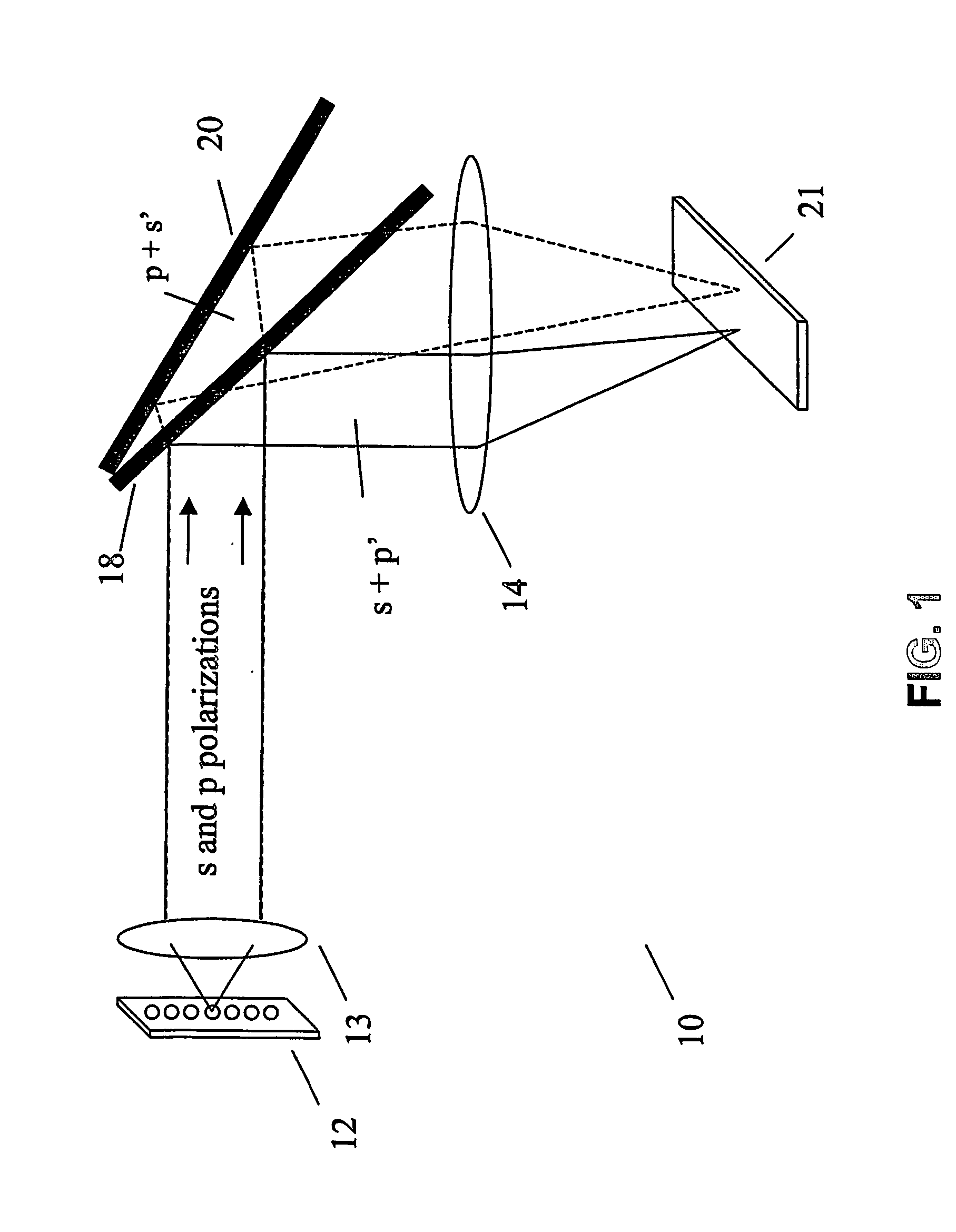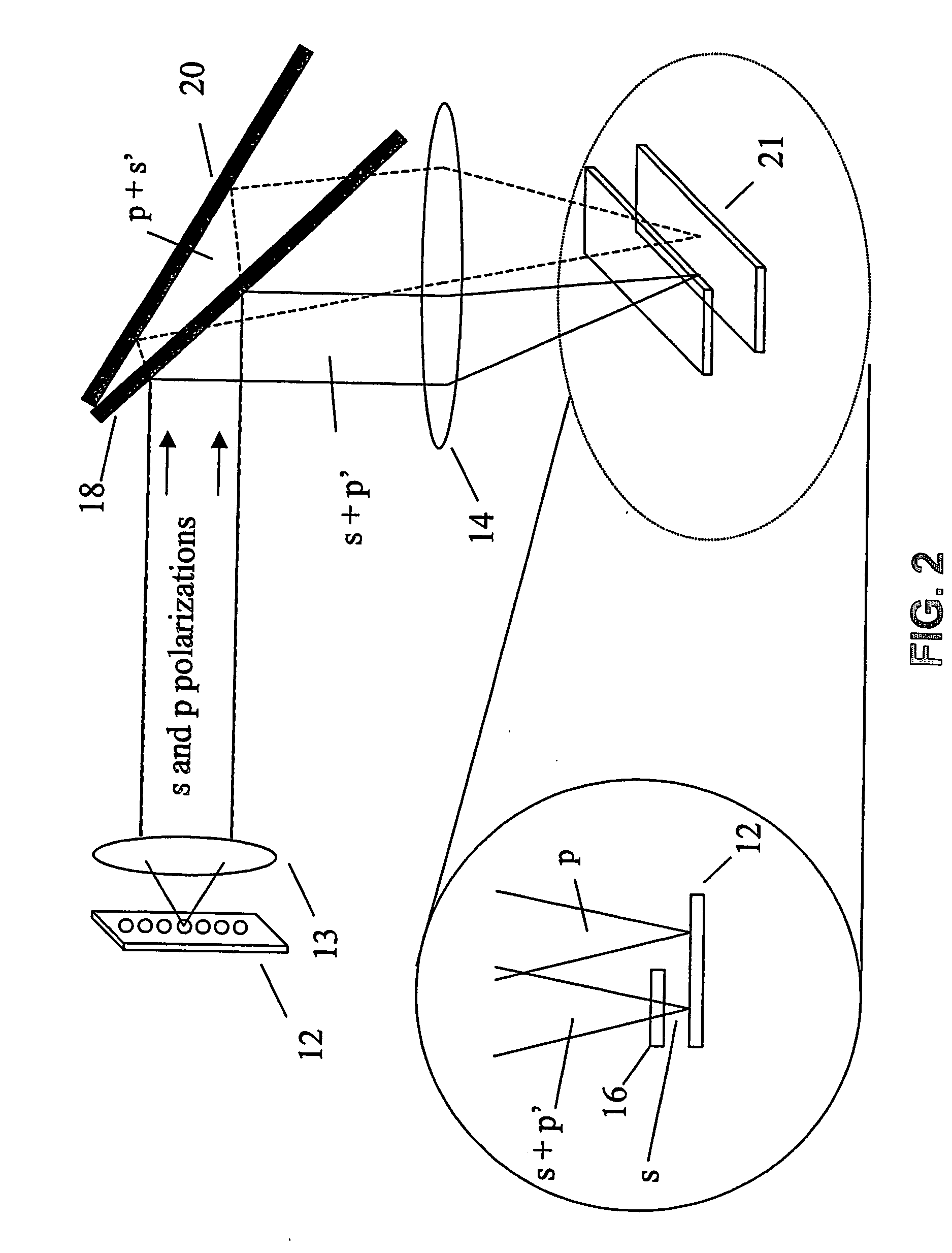Polarization detection
a polarization detection and light technology, applied in the field of polarization detection, can solve problems such as molecules falling during delay
- Summary
- Abstract
- Description
- Claims
- Application Information
AI Technical Summary
Benefits of technology
Problems solved by technology
Method used
Image
Examples
Embodiment Construction
[0034] Referring to the exemplary system 10 in FIG. 1, the object 12 to be imaged is shown at the left. Light emitted from the object is collected and collimated by an optical system 13. The collected light is directed toward a reflective polarizer 18. The angle of incidence of the light at the reflective polarizer can be greater than 30°, e.g., about 45°. The polarizer 18 reflects substantially all light having s-polarization (i.e., light polarized perpendicular to the plane of FIG. 1) and transmits substantially all p-polarized light (i.e., light polarized parallel to the plane of FIG. 1). As used herein, substantially all light having a certain polarization state means at least 70% (e.g., at least 80%, 90%, 95%, 97%, 98%, 99%, 99.5%) of the light of that polarization state at the wavelength or wavelength range of interest.
[0035] In many implementations, in addition to reflecting s-polarized light, reflective polarizer 18 also reflects a portion (e.g., less than about 10% of the ...
PUM
| Property | Measurement | Unit |
|---|---|---|
| angle | aaaaa | aaaaa |
| wavelength | aaaaa | aaaaa |
| wavelength | aaaaa | aaaaa |
Abstract
Description
Claims
Application Information
 Login to View More
Login to View More - R&D
- Intellectual Property
- Life Sciences
- Materials
- Tech Scout
- Unparalleled Data Quality
- Higher Quality Content
- 60% Fewer Hallucinations
Browse by: Latest US Patents, China's latest patents, Technical Efficacy Thesaurus, Application Domain, Technology Topic, Popular Technical Reports.
© 2025 PatSnap. All rights reserved.Legal|Privacy policy|Modern Slavery Act Transparency Statement|Sitemap|About US| Contact US: help@patsnap.com



